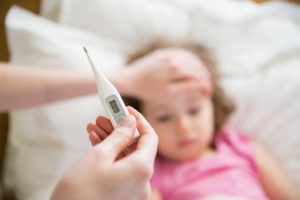“If you want to be great, you have to suffer” – Wait a minute, that actually went differently…? Nevertheless, there is some truth to this. Growing pains in children go hand in hand with growing up.
Maybe you remember how you used to lie in bed with aching legs and couldn’t fall asleep? My parents used to rub my legs with rubbing alcohol.
In this article, I explain what growing pains in children are all about, what to look out for in growing pains in general, and how you can alleviate them as parents.
Table of contents
Where Do Growing Pains Come From?
Growing pains in children are still largely unexplored. There are also no real diagnostic tests yet that can prove growing pains beyond a shadow of a doubt.There are, however, conjectures: One is that soft tissues grow more slowly than bones, and the periosteum becomes under tension during the growth spurt and therefore hurts.Another theory is that young bones get tired as they grow and the pain expresses the fatigue.
When Does Growing Pain Start In Children?
About 30% of all children experience growing pains between the ages of two and 12. And the fact that I usually had the discomfort at bedtime is no wonder either – because children grow especially intensely when they sleep. During the night, 70-80% of growth hormones are released.
What Are Typical Symptoms Of Growing Pains?
Sudden pain in the limbs is the most typical sign. Especially in the knee area and downwards it hurts: calves, shins, ankle joints and/ or the knee itself hurts then – alternately or simultaneously. The front of the thighs can also be affected.
It is not possible to localize the pain exactly. The duration of the pain is as variable as the pain itself – sometimes it only hurts for a few minutes, sometimes for an hour or longer. The main thing is that your child is pain-free again the next morning!
But Be Careful If Your Child Complains About Long-lasting Pain!
If your child complains about painful limbs for a long time, even during the day, please consult a doctor. The doctor should rule out serious illnesses, such as a bone fracture, rheumatism, an infection or even a bone tumor.
Exclude Other Diseases
Swelling Redness
It is not normal for growing pains to cause the affected area to be saved or swollen. If the area is also warm in addition, these may be symptoms of inflammation. Off to the doctor!
Avoidance Of Certain Movements
If your child is suddenly immobile and stiff moves or even limps, you can assume that something is wrong and he has pain. Please observe closely!
Pain During The Day
As already mentioned, the growth hormones are mainly released at night and in the evening. If your pet’s pain continues throughout the day, it is almost certainly not growth pains.
What Can I Do To Alleviate My Child’s Growing Pains?
If your child can’t sleep, you almost certainly can’t either. To restore peace of mind for everyone involved. Are there a few things you can do to ease growing pains:
- Comfort And encouragement – just be there for your child and comfort them. Also try to emphasize positive aspects, like obviously THE GROWING. After all, our little ones always want to grow up so much and come a little bit closer to that wish with the growing pains.
- Soothing herbal teas – can help too. And even if it’s just the placebo effect – if it helps, it helps.
- Swaddles hot water bottles – some parents say their child has been helped by cold swaddles, others lean towards warm swaddles or hot water bottles. A contradiction from a medical standpoint, but as long as it helps your child, do what feels right for them.
- Rubbing alcohol – as I said, used to help me quite a bit. It cools slightly and with the “burn” on the skin, I partially forgot about the growing pains. St. John’s wort oil or sports ointment can also help.
- Homeopathy – a classic remedy is alciumphosphoricum in the dosage D12, once five globules. It is better to ask your doctor or pharmacist for advice.
- Paracetamol – if it is really bad, a paracetamol suppository can be given.











